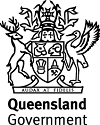Published Friday, 22 September, 2023 at 07:00 AM

Attorney-General and Minister for Justice and Minister for the Prevention of Domestic and Family Violence
The Honourable Yvette D'Ath
Government launches guide to assist media reporting on sexual violence
- A new guide developed by the Queensland Government to help media report appropriately and responsibly on sexual violence is now available.
- The guide includes information on new laws about the public naming of those charged with prescribed sexual offences, such as rape and sexual assault, set to commence on 3 October 2023.
- This resource to assist journalists was developed in response to a recommendation from the Women’s Safety and Justice Taskforce.
Journalists reporting on sexual violence in Queensland now have access to a new guide to better understand the impacts of violence on victims and their families, as well as new laws which allow people charged with certain sex offences to be named.
Attorney-General and Minister for Justice and Minister for the Prevention of Domestic and Family Violence, Yvette D’Ath, today released the Queensland Government’s Sexual Violence Media Guide.
Developed in response to a recommendation by the Women’s Safety and Justice Taskforce, the new resource provides information for media on the traumatic impacts of sexual violence and guidance on addressing community misconceptions about the issue in their reporting.
It provides journalists and editors with advice on trauma-informed approaches to reporting, sexual violence statistics, practical reporting tips and legal considerations, including covering matters before the courts.
A key section of the guide details new laws removing restrictions prohibiting the identification of an adult charged with a prescribed sexual offence such as rape or attempted rape, prior to the finalisation of committal proceedings in the Magistrates Court.
Amendments to the Criminal Law (Sexual Offences) Act 1978 commence on 3 October 2023, meaning individuals accused of specific sexual offences can have their identity published, except where it would identify or lead to the identification of the complainant.
The guide also outlines the non-publication regime associated with the new laws, which will allow a defendant, the alleged victim or the prosecution to apply to a Queensland court for an order to prohibit publication of the defendant’s identity.
Accredited media entities will have a right of appearance on an application for a non-publication order.
In developing the guide, the Palaszczuk Government consulted with stakeholders including media who regularly report on police and court matters in the state, the sexual violence service sector, legal profession, and key government agencies, including the new Interim Victims’ Commissioner.
Subsequent editions of the media guide will be updated to reflect any relevant legislative reforms which may impact on media reporting.
For more information about the Sexual Violence Media Guide visit: www.qld.gov.au/SVmediaguide.
Quotes attributable to the Attorney-General and Minister for Justice and Minister for the Prevention of Domestic and Family Violence, Yvette D’Ath:
“We know from the latest Australian Bureau of Statistics Personal Safety Survey that almost 2.8 million Australians say that they’ve experienced sexual violence in some form since the age of 15 – and these are just the people who have spoken about it.
“Helping victim-survivors of sexual violence feel safe to tell their stories is an important part of highlighting the prevalence of this problem in our community and I’m proud this Government is fixing outdated laws that can perpetuate harmful rape myths, stopping victims from coming forward.
“These myths blame victim-survivors for sexual violence that has happened to them, instead of focusing on the reality that perpetrators who use violence against others make a choice to do so.
“Journalists and the media play a vital role in how Queenslanders view and respond to the issue of sexual violence in our communities.
“This new resource provides guidance on how journalists can report on sexual violence in a trauma-informed way without re-traumatising victim-survivors in the process.
“It contains practical tips on interviewing people impacted by trauma, including important considerations about the words and images used in media reports.
“Importantly, it will also help the media industry understand new laws and related court processes around the public naming of those brought before the courts accused of rape and certain other sexual offences.
“Journalists report on many traumatic events, which can impact them too, so the guide also provides advice on self-care for media and includes contact information for support services that can assist anyone impacted by trauma.
“I hope that by modernising our laws and providing appropriate guidance for media on the reporting on sexual violence, more victim-survivors will have confidence to share their experience and receive the support they need.
“I urge all journalists who report on sexual violence and related matters in the courts to familiarise themselves with this new media guide to help them understand they can be change-makers by promoting a culture that does not tolerate sexual violence and supports and protects victim-survivors.”
ENDS

